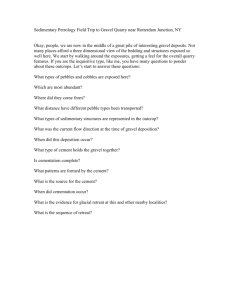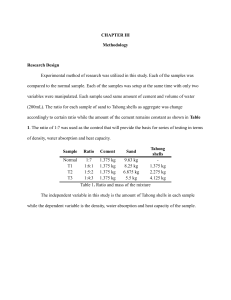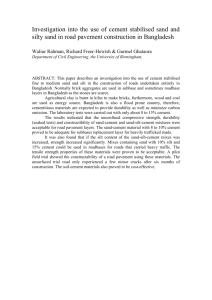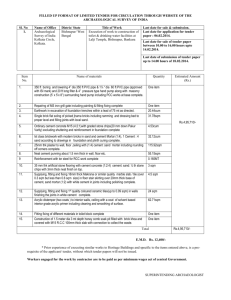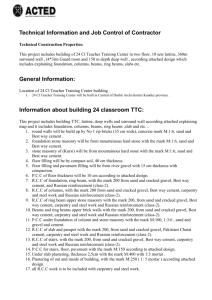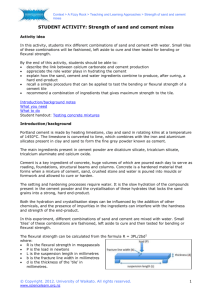A composite material – making concrete
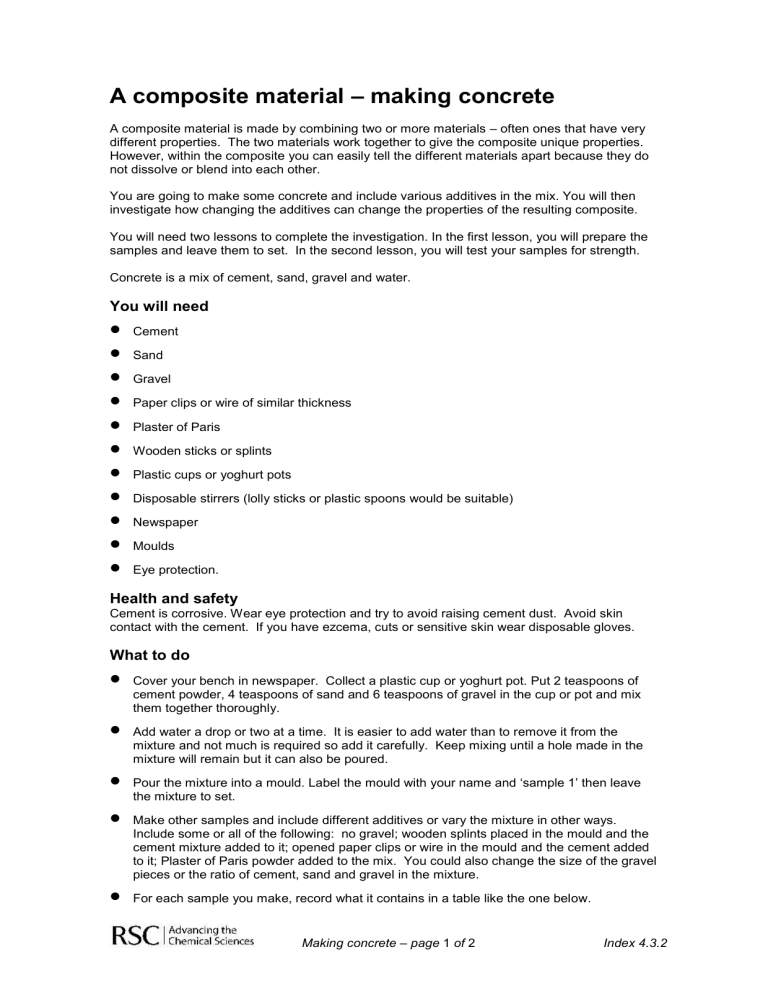
A composite material – making concrete
A composite material is made by combining two or more materials – often ones that have very different properties. The two materials work together to give the composite unique properties.
However, within the composite you can easily tell the different materials apart because they do not dissolve or blend into each other.
You are going to make some concrete and include various additives in the mix. You will then investigate how changing the additives can change the properties of the resulting composite.
You will need two lessons to complete the investigation. In the first lesson, you will prepare the samples and leave them to set. In the second lesson, you will test your samples for strength.
Concrete is a mix of cement, sand, gravel and water.
You will need
Cement
Sand
Gravel
Paper clips or wire of similar thickness
Plaster of Paris
Wooden sticks or splints
Plastic cups or yoghurt pots
Disposable stirrers (lolly sticks or plastic spoons would be suitable)
Newspaper
Moulds
Eye protection.
Health and safety
Cement is corrosive. Wear eye protection and try to avoid raising cement dust. Avoid skin contact with the cement. If you have ezcema, cuts or sensitive skin wear disposable gloves.
What to do
Cover your bench in newspaper. Collect a plastic cup or yoghurt pot. Put 2 teaspoons of cement powder, 4 teaspoons of sand and 6 teaspoons of gravel in the cup or pot and mix them together thoroughly.
Add water a drop or two at a time. It is easier to add water than to remove it from the mixture and not much is required so add it carefully. Keep mixing until a hole made in the mixture will remain but it can also be poured.
Pour the mixture into a mould. Label the mould with your name and ‘sample 1’ then leave the mixture to set.
Make other samples and include different additives or vary the mixture in other ways.
Include some or all of the following: no gravel; wooden splints placed in the mould and the cement mixture added to it; opened paper clips or wire in the mould and the cement added to it; Plaster of Paris powder added to the mix. You could also change the size of the gravel pieces or the ratio of cement, sand and gravel in the mixture.
For each sample you make, record what it contains in a table like the one below.
Making concrete – page 1 of 2 Index 4.3.2
Sample number
1
2
3
What it contains
2 teaspoons cement, 4 teaspoons sand, 6 teaspoons water
Mass required to break it
When you have finished making samples, place them all in a safe place to set. Wrap up the newspaper on your desk, making sure you collect all the dust and bits. Put this into the rubbish bin, along with your plastic mixing pot, stirrer and gloves if you wore them.
Do not wash up anything that has had cement powder on it.
Wash your hands.
Making concrete – page 2 of 2 Index 4.3.2
